Our parks are for everyone. Our state, counties, and municipalities offer wonderful places for us to experience physical activity outdoors. These are spaces where children can play, wander, and imagine. Here are some tips on how you and your family can enjoy the outdoors and stay safe.
Senses make memories.
- Sight
- Sound
- Smell
- Touch
- Taste
Our senses allow us to experience and connect to places in ways that are personal and unique. When people imagine their own neighborhood, the distinctive features that remind them of home, can be different from their neighbors. One person thinks of the aroma of a restaurant around the corner, while a neighbor may be reminded of the sounds of children playing at the local playground.
Trails vary in size. While enjoying the parks, trails, boardwalks, remember not to crowd each other. Give everyone enough space so they feel comfortable, and the only people within 6-feet from you are people that are in your household. Trails can have sections that are just narrow enough for a single person, and a variety of plants can cause discomfort, i.e. poison ivy. It’s important to be aware of your surroundings. Take advantage of a clearing if someone is approaching on a narrow trail.
Biking in Face Masks. Masks and physical distancing has been effective in decreasing the spread of COVID-19. As the temperatures and humidity rise, wearing masks can become uncomfortable. When stopped, your breath will create a warmer environment within the mask. Thankfully, when riding a bike, you may find relief as the air is forced into the mask as you breathe and move forward. Bring a backup mask on humid days. In the coming weeks, as the humidity rises, it can become more challenging for moisture to evaporate and make it challenging to get enough oxygen.
Share the Trail. Our parks are for everyone and trail etiquette is essential. Everyone should feel welcome, comfortable, and not crowded. Imagine that our trails can be used similarly to roads. When traveling, keep to the right. Oncoming trail users would have space to move in the opposite direction, and people and bikes who are moving more quickly can pass on your left side. When passing other trail users, give them warning by ringing your bike bell or by calling out, “Passing on the left.”
Masks, gloves, pet waste and other litter should not be left behind. If you are bringing food, or drinks to the park, pack up all of your garbage and dispose of them when you leave. This is what it means to “Carry in. Carry out.” Plastics are carried by stormwater and storm drains and can travel to other bodies of water.
Lastly, always check yourself, your children, and pets for ticks when you get home.
Be safe and enjoy your time outdoors.
 Imagine a situation in which a parent and child ride bicycles to a local establishment. They arrive and discover that there is no place to secure their bicycles. They may choose to leave bikes unattended to enter. Their next option is to search for a nearby post or fixture to secure their bikes and then return to the store. Or they may decide to go elsewhere entirely. Because of this experience, it becomes less likely that they will choose to ride bicycles to return to this location.
Imagine a situation in which a parent and child ride bicycles to a local establishment. They arrive and discover that there is no place to secure their bicycles. They may choose to leave bikes unattended to enter. Their next option is to search for a nearby post or fixture to secure their bikes and then return to the store. Or they may decide to go elsewhere entirely. Because of this experience, it becomes less likely that they will choose to ride bicycles to return to this location.
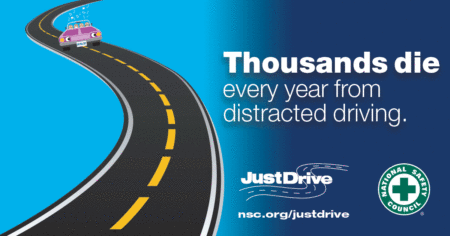 Take the pledge
Take the pledge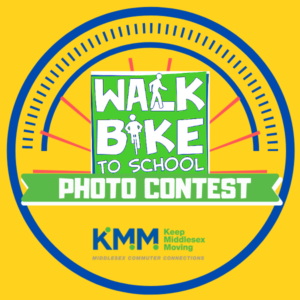 It’s that time of year to gear up for the annual Middlesex County Walk to School Day!
It’s that time of year to gear up for the annual Middlesex County Walk to School Day!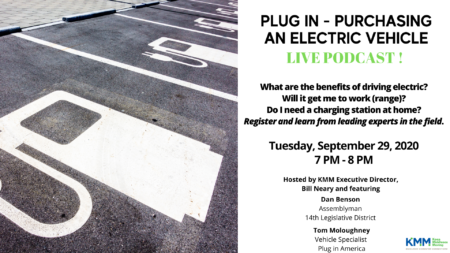 Drive Electric Week – Live Podcast!
Drive Electric Week – Live Podcast! My Mobility Plan: My Mobility Plan is a tool created by the Centers for Disease Control and Prevention (CDC) to help older adults remain active, safe, and independent as they age. The plan consists of three sections:
My Mobility Plan: My Mobility Plan is a tool created by the Centers for Disease Control and Prevention (CDC) to help older adults remain active, safe, and independent as they age. The plan consists of three sections: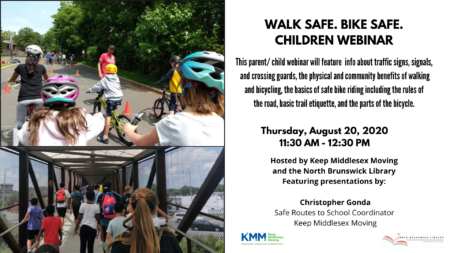

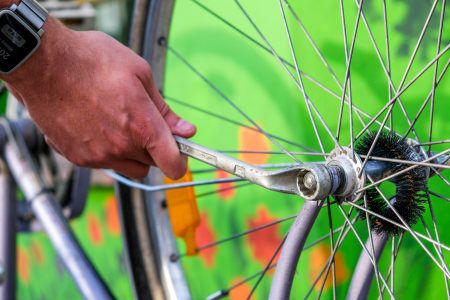 It’s important for all members of the family to stay physically active. With the freedom to exercise in our neighborhoods, we can still enjoy the outdoors by walking, running, and riding bicycles. With fewer cars on the road, this could be the safest time to ride. In New York and other cities, people are choosing bicycles over buses and subway cars to maintain safe physical distance from other commuters. New Jersey recognizes bicycles as a healthy transportation option and has declared bicycle shops are an essential resource during this public health crisis.
It’s important for all members of the family to stay physically active. With the freedom to exercise in our neighborhoods, we can still enjoy the outdoors by walking, running, and riding bicycles. With fewer cars on the road, this could be the safest time to ride. In New York and other cities, people are choosing bicycles over buses and subway cars to maintain safe physical distance from other commuters. New Jersey recognizes bicycles as a healthy transportation option and has declared bicycle shops are an essential resource during this public health crisis.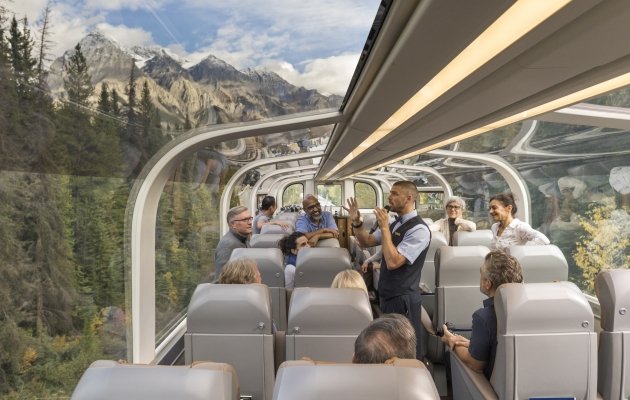 The invention of the railroad in 1804 brought forth innovation, human expansion, and a new method of travel. Train travel helped change the course of human history in ways we couldn’t have imagined. From the B&O Railroad which was the first American company to be granted a charter to transport both freight and passengers, to the NYC subway system which has the most stations in the world, our nation is deeply dependent on this method of travel.
The invention of the railroad in 1804 brought forth innovation, human expansion, and a new method of travel. Train travel helped change the course of human history in ways we couldn’t have imagined. From the B&O Railroad which was the first American company to be granted a charter to transport both freight and passengers, to the NYC subway system which has the most stations in the world, our nation is deeply dependent on this method of travel.